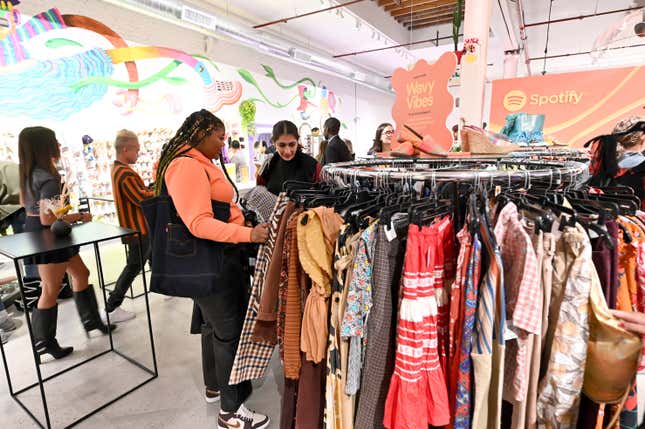
Growth in the market for used clothing might outpace fast fashion as more consumers become aware of the environmental, social, and economic benefits of thrift shopping. The global secondhand apparel market is expected to grow 127% by 2026, three times faster than the apparel market overall, according to a recent report by thredUP, an online consignment and thrift store.
In 2022, the market for secondhand apparel grew 24% from the year before, to $119 billion dollars. The report from thredUP shows growth happening worldwide, with North America making up around 42% of the market. Worldwide, the market for secondhand fashion is expected to grow 127% by 2026 to $218 billion worldwide.
The circular economy gains momentum
Secondhand clothing is expected to make up $30.6 billion or 10% of all clothing sales in the US by the end of 2025, according to estimates by eMarketer and Insider Intelligence.
Together, these projections signal an evolution in the fashion industry and perhaps a tempering of fast fashion. Fast fashion produces clothing quickly, often resulting in lesser quality, with consumers often throwing garments away after 10 wears, and continually buying new clothes.
The secondhand clothing market offers reuse of garments that last longer and can be resold multiple times. It’s an example of a circular economy in which there is less waste, a model that is gaining appeal among businesses with sustainability goals.
Why is thrifting so popular?
Other highlights from the thredUP report include that three out of four consumers who shop secondhand identify as thrifters, believing that secondhand apparel is more socially acceptable now than it was five years ago.
The top-cited reason to buy secondhand, across all generations, is to save money, with the fastest adopters being Gen Z, who say they also are buying to be more sustainable.